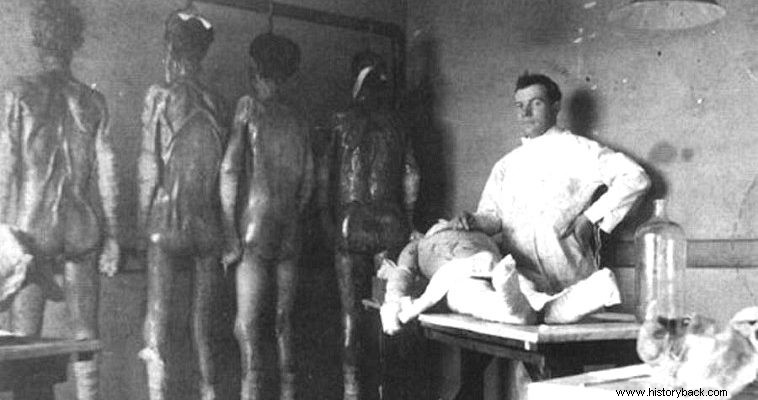
Human tissue from prisoners executed by the Nazi regime and used in anatomy experiments will be buried in Berlin on Monday after three years of research on samples handed over by descendants of Dr. Hermann Steeve, the director of the Anatomy Institute of the University of Berlin during the Third Reich.
Of the bodies of the dissidents executed by the National Socialist regime, only 300 tissue samples remain, mounted on laboratory plates and found by the heirs of the German anatomist, neatly arranged in small boxes. These tissues, which are difficult to distinguish with the naked eye, were handed over in 2016 to Professor of Anatomy Andreas Winkelman to try to give them an identity again.
"Webs of such a small size are not usually considered worthy of burial... but in this case the story is of particular importance since they come from people who were deliberately deprived of a burial place so that their relatives would not know where they are," explains Andreas Winkelman.
Although it was impossible for him to determine precisely the number of people hidden behind the 300 samples,Andreas Winkelmann managed to isolate twenty names and figures that prove a clear connection to the prison of Plotzensee, where 2,800 people were hanged or beheaded by the Nazis between 1933 and 1945.
At the request of the families, the victims, whose remains will be interred on May 13 at Berlin's Dorotestant Cemetery, will not be publicly identified. However, it is known that most are women. Because Hermann Stieve, who remained director of the University of Berlin's Institute of Anatomy from 1935 until his death in 1952, had one specialty:the study of the effects of stress and fear on the female reproductive system.
"Items"
To advance his research, the German scientist was studying tissues of the reproductive system of women who had been executed by the Nazi regime. Among the objects of his study, 13 of the 18 resistance members of the spy network "Red Orchestra" (Rote Kapelle), among them the American Mildred Fish Harnack, who was executed by beheading in 1943 by his personal and urgent order Hitler.
Unlike other German scientists who became known for their brutality, Hermann Steeve did not belong to the National Socialist Party and did not experiment on living people. But he knew that these dead guinea pigs had been tortured and executed. “That shows how cold he was. He saw people as simple objects," says Andreas Winkelman.
The doctor "collaborated with the justice system of the Nazi regime to further his investigations."
German justice did not deal with Hermann Steeve
After the war, German justice did not deal with Hermann Steeve, who continued his career, as did many other German scientists who worked with and for the Nazis. Because only high-ranking officials of the Third Reich were convicted in the "doctors' trial" at Nuremberg .
Even today, the results of these investigations, despite the conditions under which they were carried out, are considered important for modern gynecology. Hermann Steeve remains a posthumous honorary member of the German Society of Gynecology and Obstetrics.
Monday's burial ceremony, organized by the Memorial of the German Resistance and the large university hospital of Charite, Berlin, successor to Hermann Steeve's Institute of Anatomy of the University of Berlin, will turn the spotlight on his scientific career.
"Certain questions remain to be answered about Hermann Steeve and the way he conducted his research," insists Andreas Winkelmann, who has been studying the anatomist's work for years. "I don't want to close this chapter of German history, because future generations must know what happened and why we consider it unacceptable".
SOURCE:APE-ME
